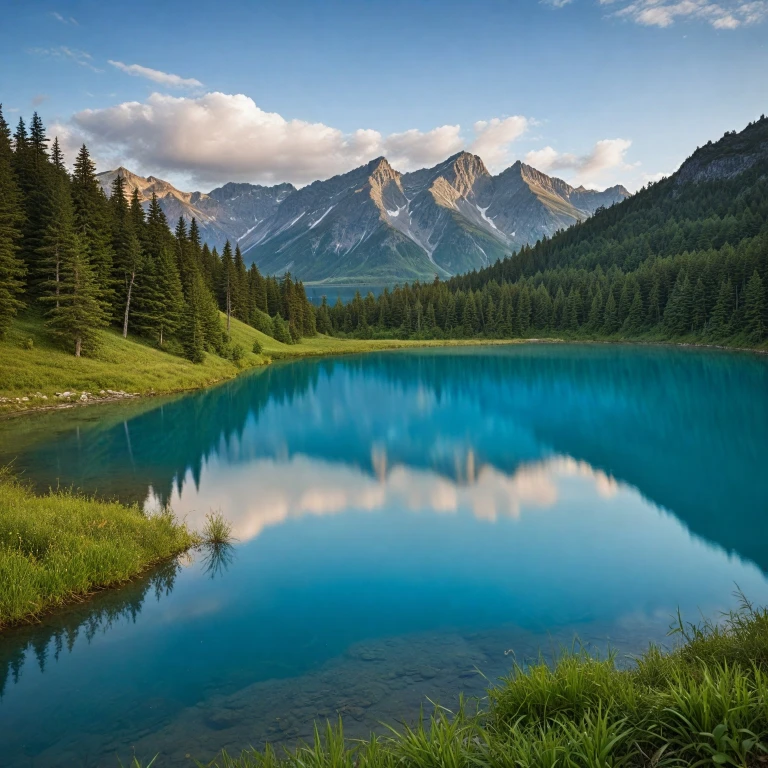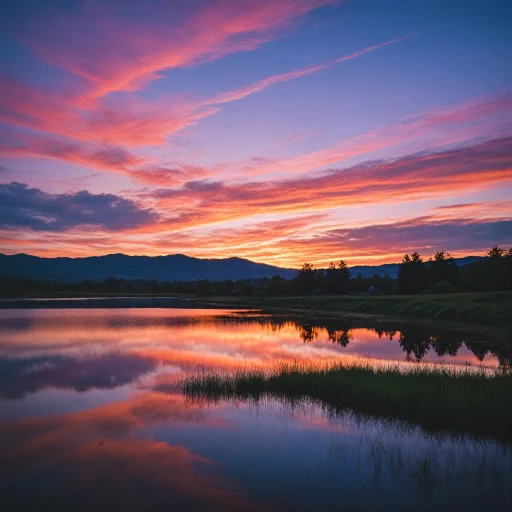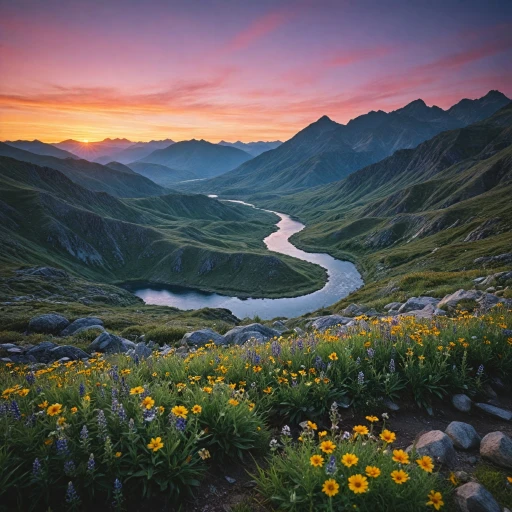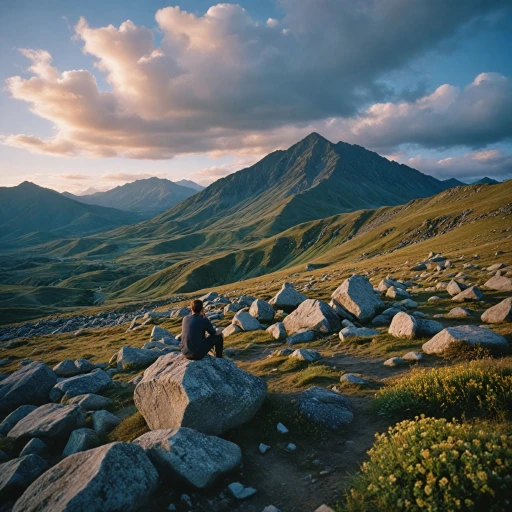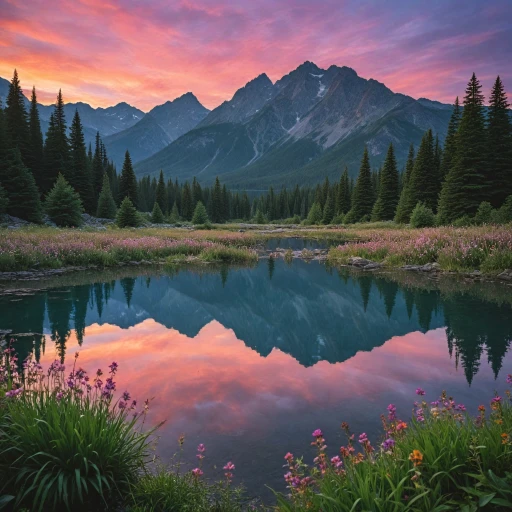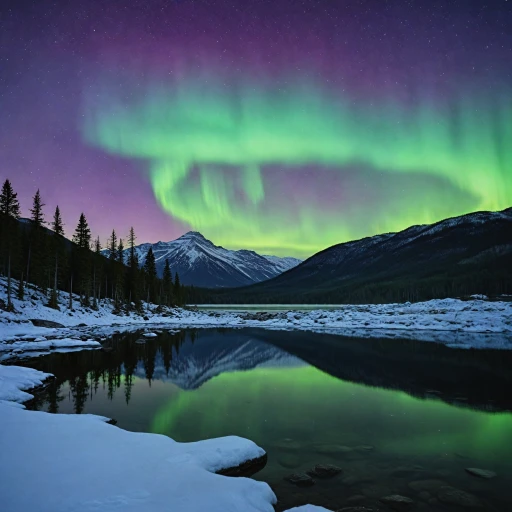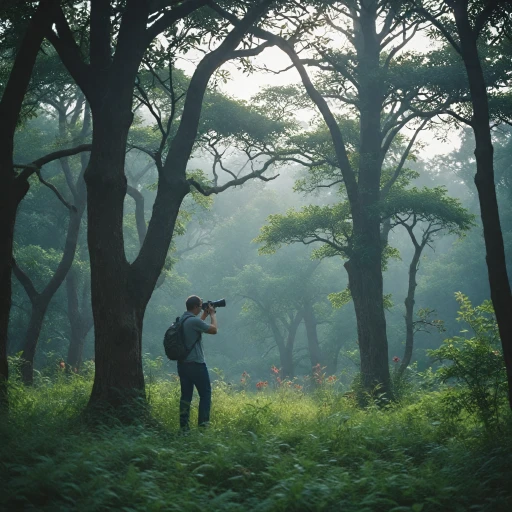
Understanding Wide Lenses
Elementary Insight into Wide Lenses
To delve into the realm of landscape photography, understanding wide lenses is essential. These lenses, revered for their capability to capture sweeping vistas, significantly elevate your landscape images by enhancing depth and perspective. A wide angle lens typically sports a short focal length, allowing you to fit more of the scene into each shot. For example, a lens with a focal length ranging from 10mm to 24mm is often considered ultra wide, making it a staple for capturing expansive landscapes.
Wide lenses provide a broader angle of view, which is invaluable when photographing landscapes where you wish to incorporate as much of the scene as possible. A wide angle lens can emphasize the breadth of a scene, drawing viewers into the photo and creating a more immersive experience.
When selecting a lens, the choice between brands like Nikon, Sony, or Canon usually boils down to model-specific features and personal preference. Evaluating factors such as the maximum aperture, image quality, and compatibility with your camera will guide you in pinpointing the best lens for your landscape needs.
For photographers seeking more technical adjustments, incorporating filters can enhance image quality. For instance, understanding the impact of graduated ND filters on landscapes or sunsets can refine your shots further. For a deeper dive into why these accessories matter, consider learning from choosing the right graduated ND filter.
In summary, having a grasp of the core characteristics of wide lenses will empower you to choose the right tool for capturing stunning landscapes. Paired with the appropriate photography techniques, these lenses will be indispensable for landscape photographers aspiring to transcend their craft.
Benefits of Wide Lenses in Landscape Photography
Enhancing Your View: The Advantages of Wide Lenses
Wide lenses play a pivotal role in landscape photography, offering unique benefits that can dramatically alter the end result of your shots. If you're aiming to create breathtaking images that capture the vastness of natural scenery, incorporating a wide lens into your camera setup may be exactly what you need. Firstly, wide angle lenses, especially those designed for full frame cameras like Nikon or Canon USM, provide an expansive field of view. This increased angle makes it possible to capture broader sections of a scene, delivering an intriguing perspective that simply isn't possible with standard lenses. The breadth of the angle is particularly advantageous when trying to capture landscapes in their entirety. Additionally, wide lenses often come with variable focal lengths, allowing you to play around with depth field effectively. This adaptability lets you emphasize detailed foreground elements while keeping the background in sharp focus. Coupled with a camera that supports low light photography, you can maintain exceptional image quality even during sunrise or sunset. Moreover, wide lenses are not only available as prime lenses but also as zoom lenses. This gives you the flexibility to adjust your composition with ease, capturing the landscapes that inspire you without always needing to reposition your camera. Another key benefit is related to the aperture. Many wide lenses offer a wider aperture, which means they can perform better in low light conditions, giving landscape photographers the capability to shoot in various settings without compromising image quality. If you're still curious about the potential that wide lenses hold for your photography, you can delve deeper into information on choosing the ideal lenses for stunning landscape photography. This resource can assist you in understanding the different types of lenses available and how they can best suit your landscape photography needs.Key Features to Look for in a Wide Lens
Key Elements to Focus on for Optimal Image Quality
When selecting a wide lens for landscape photography, it's crucial to focus on specific features that will ensure the best possible image quality. Understanding these elements can significantly enhance your photography by allowing you to capture breathtaking landscapes with precision.- Aperture: A wide aperture (lower f-number) allows more light to enter the lens, which is essential for low light conditions. It also provides depth of field, enabling sharper focus across the scene.
- Focal Length: The range of focal lengths can determine whether a lens is suitable for sweeping vistas or more confined shots. For vast landscapes, an ultra wide focal length, typically ranging from 10mm to 24mm for a full frame camera, is ideal.
- Lens Distortion: Wide angle lenses can sometimes cause distortion at the edges of your image. Look for lenses known for minimizing distortion to keep your shots crisp and true to life.
- Image Quality: Pay attention to the sharpness and clarity offered by the lens across the frame. Superior lens coatings can also reduce flare and ghosting, particularly in sunny landscapes.
- Build Quality: Robust construction is important, especially for those frequently shooting outdoors in varying weather conditions. Consider lenses from well-regarded brands like Nikon, Canon, or Sony for reliable performance.
- Compatibility with Camera Systems: Ensure that the lens you choose is fully compatible with your camera body, whether it's a Canon USM, Nikon, or Sony system. This compatibility extends to key features like autofocus and image stabilization, which can greatly improve the quality and usability of your wide angle shots.
Comparing Popular Wide Lenses
Exploring Top Choices for Landscape Photographers
Choosing the ideal wide lens for breathtaking landscapes is a task every landscape photographer takes seriously. The market teeming with myriad options can be overwhelming, but boiling them down to their distinctive elements will simplify your selection process. Here, we'll walk you through some favored wide lens models from major brands like Nikon, Sony, and Canon, suitable for capturing stunning landscapes effortlessly.- Canon EF 16-35mm f/2.8L III USM: A top choice among serious landscape photographers, this wide angle lens boasts a versatile focal length range of 16-35mm, allowing you to frame more expansive vistas. Its ultra-wide capacity enables those dramatic shots in low light, ensuring superb image quality even with the broadest angles. Canon's sophisticated Ultra Sonic Motor (USM) promotes swift and silent autofocus, which is extremely handy for shooting in varying conditions.
- Nikon AF-S FX NIKKOR 14-24mm f/2.8G ED: Nikon enthusiasts often rave about the performance of this particular lens due to its exceptional sharpness and edge-to-edge clarity, essential for full frame landscape shots. Its solid construction is weather-sealed, making it a reliable companion for capturing outdoor landscapes in any weather.
- Sony FE 12-24mm f/4 G: Preferring a diverse zoom range with broad scenes in mind, Sony's full-frame E-mount option extends impressive depth of field while still maintaining clarity across varying focal lengths. It's surprisingly lightweight for an ultra-wide lens, so you can effortlessly handle it during long photographic excursions.
- Sigma 14-24mm f/2.8 DG HSM Art: Known for delivering outstanding image quality, the Sigma Art series never falls short in the realm of artistic wide angle photography. Its constant aperture of f/2.8 ensures vibrant photos even in lower light settings, which is a boon when aiming for a particular depth field effect in your landscape photography.
Tips for Using Wide Lenses Effectively
Maximizing the Potential of Your Wide Lens
Landscapes are vast, captivating, and demand a lens that captures their grandeur effectively. To make the most out of your wide lens, here are some actionable tips:- Get Close to Your Subject: Wide angle lenses can make subjects appear smaller. To counteract this, get closer to your main subject than you might think necessary. This adds prominence and impact to your photo, ensuring that it doesn't get lost in the wider frame.
- Level Your Camera: Maintaining a level camera with the horizon is crucial in landscape photography to avoid distorted or skewed images. This is especially important when using ultra wide angle lenses on full frame cameras.
- Explore Different Apertures: Experiment with aperture settings to control depth of field. Smaller apertures (higher f-numbers) can be used to keep everything in sharp focus, which is ideal for wide views.
- Capitalize on Lighting: For those stunning landscape shots at dawn or dusk, using wide angle zoom lenses allows more flexibility to capture the light dynamically. Be sure to have a lens that performs well in low light conditions to maintain image quality.
- Use a Tripod: To capture the true beauty of landscapes without camera shake, a sturdy tripod will help keep your camera steady, especially in prolonged exposures.
Common Challenges and Solutions
Overcoming Potential Obstacles with Wide Angle Lenses
When embracing the art of landscape photography using wide angle lenses, photographers may encounter several challenges that can affect the final image quality. Here's how to address these issues effectively to capture those breathtaking shots every time.- Distortion Effects: Wide angle lenses can sometimes introduce distortion, particularly at the edges of the frame. This effect, known as barrel distortion, can make straight lines appear curved. To minimize this, consider software that can correct distortion post-processing, or opt for a high-quality lens from reputable brands like Canon or Nikon, which offer improved optical performance.
- Managing Vignetting: Vignetting, or the darkening of corners, is a common issue with wide angle lenses, especially at wider apertures. This is often more pronounced in full frame cameras. To counteract vignetting, you can close down the aperture a bit, use a lens hood to prevent unwanted light entering from the sides, or adjust in post-processing.
- Navigating Depth of Field: Achieving the right depth of field with a wide lens requires careful selection of aperture and focal length. Use a smaller aperture to keep both the foreground and background in sharp focus, which is crucial for landscape photography. Remember that some lenses perform better at a sweet spot in their aperture range for optimal sharpness.
- Low Light Conditions: Capturing landscapes in low light scenarios can be challenging. A lens with a large maximum aperture or a camera with excellent ISO performance can help. Alternatively, increasing the exposure time can bring more light into the shot—however, using a tripod is recommended to avoid camera shake.
